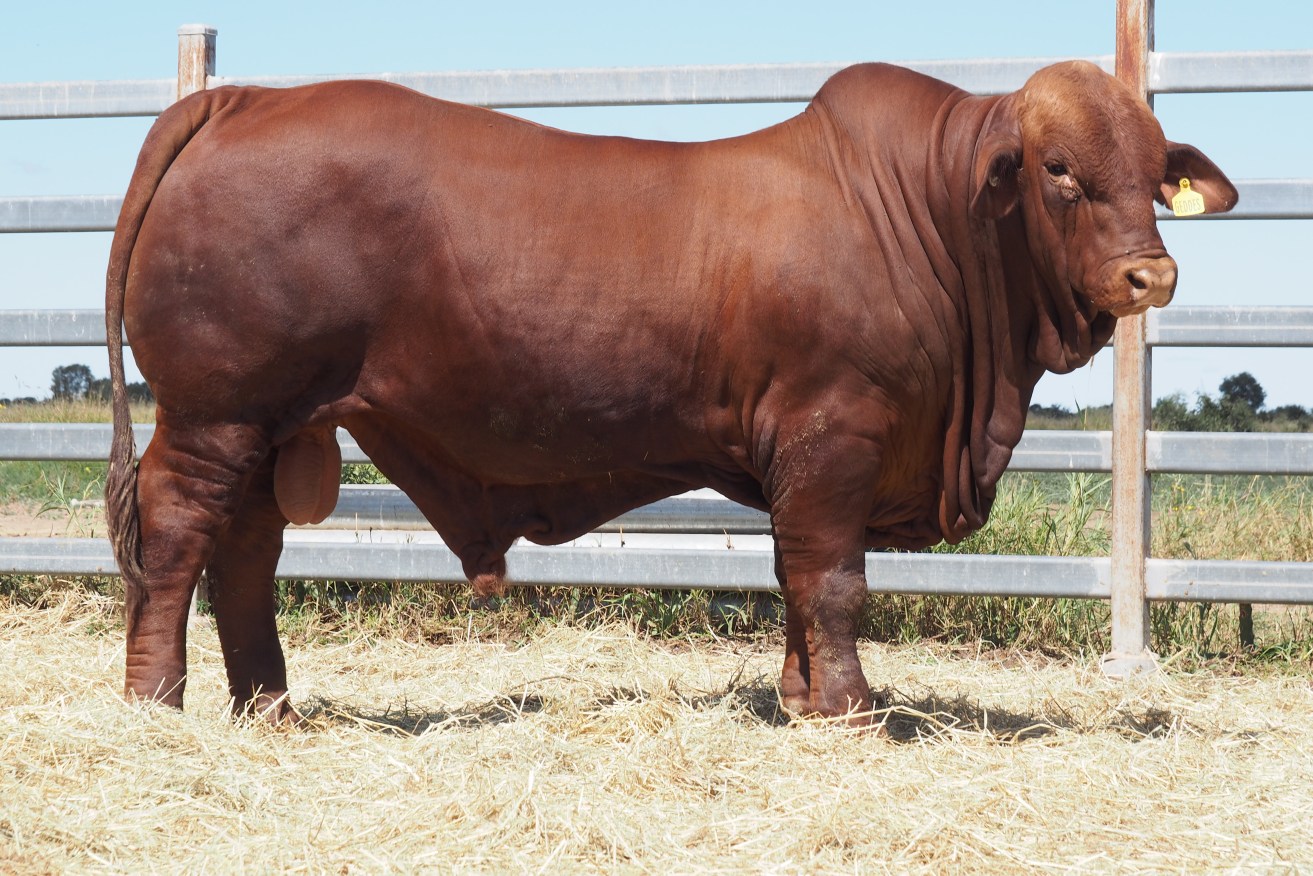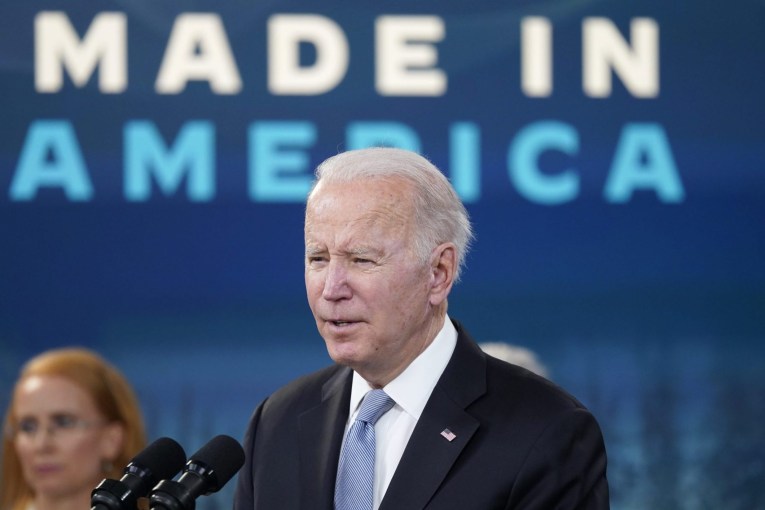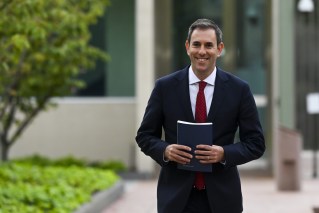Bang for their buck: Cattle buyers spend big on bulls they need to fire
Beef producers are paying record money for stud bulls during Queensland’s traditional spring sales, shrugging off warnings of a third extreme La Nina wet season and the dire prospect of further input cost increases.


Top selling Droughtmaster bull Oasis Long John, which fetched a breed record $220,000 price in Rockhampton this week. (Photo: Droughtmaster Australia)
With Australia’s biggest bull sale still to come next month – the annual Brahman Breeders Association fixture in Rockhampton – producers have already splashed nearly $7 million across the catalogue of the annual national Droughtmaster sale in the central Queensland beef capital this week.
The event proved a huge payday for Dingo stud breeder Adam Geddes, who offloaded 16 bulls at an average price of $44,500 to collect $7112,000 from the outing.
He sold one bull for $220,000 to buyers in Winton – $40,000 above the previous breed record set in 2012 – and another two for $130,00 and $120,000 which both went to homes in central Queensland.
Geddes said the result was still sinking in.
“You dream of something like that happening but you never allow yourself to think that it really will come true – it’s all a bit unreal,” he said.
Droughtmaster CEO Simon Gleeson described this week’s scenes at the Gracemere livestock selling complex outside Rockhampton as “massive and unbelievable”, estimating the uniquely Queensland cattle breed had doubled growth in the last three years.
Elsewhere in Queensland, other cattle breeds are also sharing in the big money.
A Santa Gertrudis breed record was set this week on the Darling Downs with a bull sold for $175,000 to NSW buyers, while at Australia’s biggest Charolais stud at Dalveen, near Stanthorpe, a bull under the Palgrove prefix sold for another breed record at $115,000.
According to market watchers, producers who are paying jaw-dropping amounts for pedigree bulls could be banking on the chance the expected wet will arrive at a level to furnish their paddocks with grass instead of submerging them in mud.
If the former scenario eventuates, Queensland could be looking at an intense re-build of its cattle herd, depleted in recent years by drought, floods and big liquidations to capitalise on historically high cattle prices.
Gleeson told InQueensland that the money spent during Queensland’s big cattle sell-down during recent seasons appeared to be flowing back into the stud cattle arena where “cashed-up” buyers were reinvesting in premium genetics.
Gleeson said confidence in the seasonal outlook was driving some of that behaviour, but a softening of the live export trade was also having an impact, with buyers in Western Australia and the Northern Territory looking to expand their options with cattle that can serve a dual purpose – hardy enough to go on boats, while still suitable for the domestic market.
“We had some major bulk buyers from Western Australia at the sale who will be taking home a lot of quality Droughtmaster bulls to soften up their herds for on-shore processing,” he said.
With cheques now signed, those who have purchased bulls in recent weeks will be looking to their newly acquired sires to “get to work” over summer and put blossoming, lucrative calves on the ground.
Geddes told InQueensland all of his bulls were fertility tested before the sale, assuring buyers their money would be well spent.
Not even a looming disease threat like Foot and Mouth disease appears to be dampening the mood, with 84 per cent of respondents to a recent Rabobank survey saying they were confident of managing the pathogen in the event it breached Australia’s biosecurity defences.
Recent Meat & Livestock Australia commentary has described buyer demand for cattle as “robust” and that the herd rebuild “remains front of mind for Queensland producers”.
The recent commentary reinforces forecasts from MLA earlier in the year that the northern pastoral system would require a positive end to the 2022 wet season before the rebuild could definitively begin in 2023.









